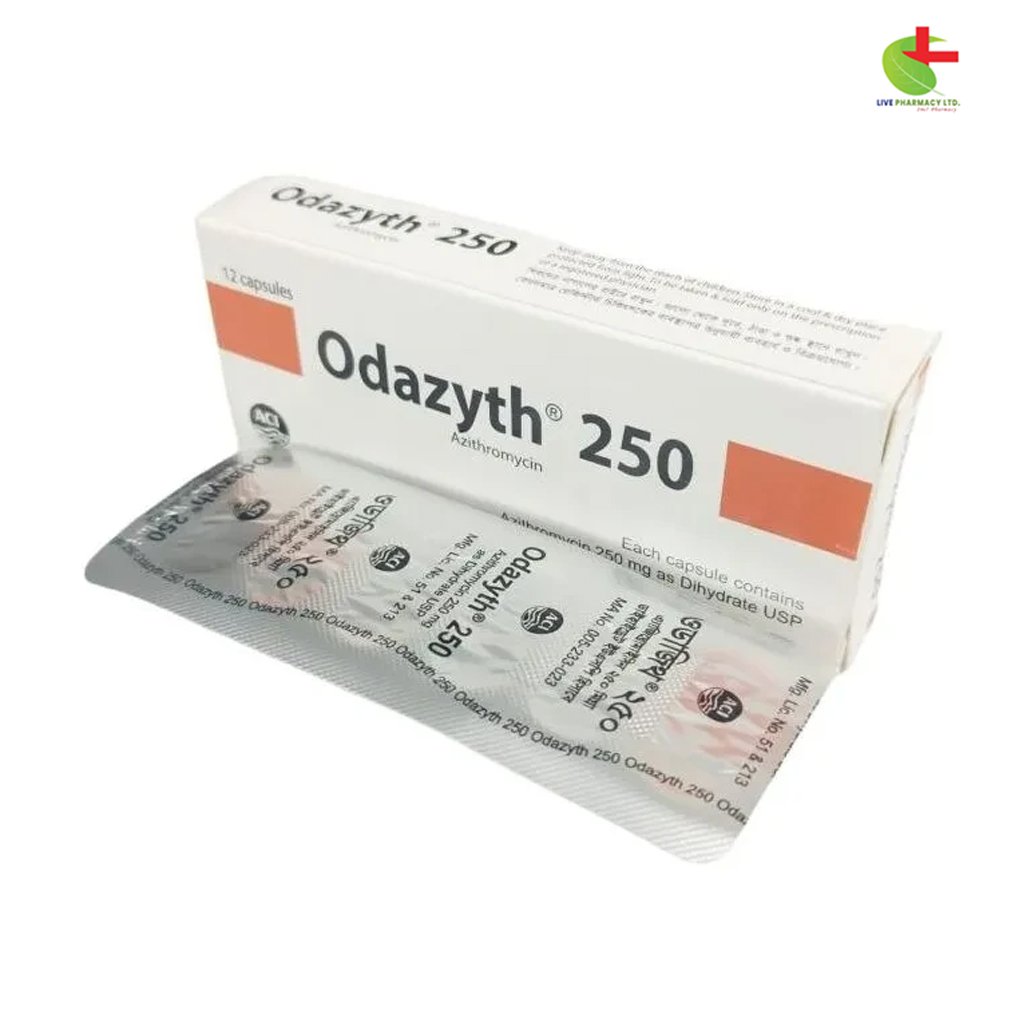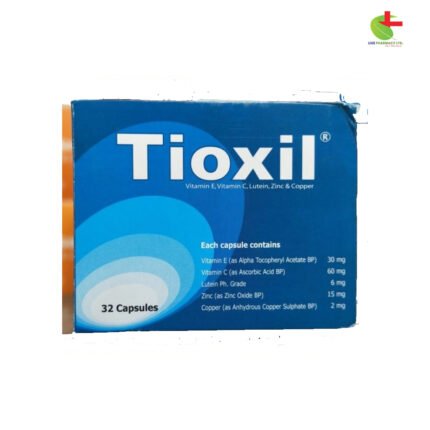Odazyth 250
150.48৳ Strip
- Odazyth is a broad-spectrum antibiotic for bacterial infections like respiratory, skin, and sexually transmitted infections.
- Contains Azithromycin, which provides effective treatment with prolonged action and fast tissue penetration.
- Available in oral and intravenous forms for both adults and children.
- Known for minimal side effects and a well-established safety profile.
- Always use as prescribed by a healthcare provider.
 Brand
Brand
|
ACI Limited |
|---|---|
 Generics
Generics
|
Azithromycin Dihydrate |
 Type
Type
|
Tablet |
Indications
Odazyth is indicated for the treatment of bacterial infections caused by susceptible organisms, including:
- Lower respiratory tract infections such as bronchitis and pneumonia
- Upper respiratory tract infections including sinusitis, pharyngitis, and tonsillitis
- Otitis media (middle ear infections)
- Skin and soft tissue infections
- Sexually transmitted infections (STIs) like non-gonococcal urethritis and cervicitis caused by Chlamydia trachomatis
Note: Use only as directed by a registered healthcare provider.
Pharmacology
Azithromycin, the active ingredient in Odazyth, is a highly stable macrolide antibiotic with excellent tissue penetration. It is absorbed quickly and reaches peak concentrations within 2.1 to 3.2 hours after oral administration.
- Mechanism of Action: It works by binding to the 50S ribosomal subunit of bacteria, disrupting protein synthesis and preventing bacterial growth.
- Tissue Penetration: It concentrates in the tissues, particularly in phagocytes, and can remain active in infected areas for several days, even with a single dose.
- Elimination: Azithromycin is primarily eliminated through biliary excretion, with minimal renal excretion.
Microbiology: Azithromycin is effective against a wide range of microorganisms, including both gram-positive and gram-negative bacteria, as well as certain anaerobic pathogens.
Dosage
Oral Dosage
- Adults:
- 500 mg once daily for 3 days
- Alternatively, 500 mg on Day 1, followed by 250 mg daily for the next 4 days.
- Sexually transmitted infections (Chlamydia):
- 1 gm single dose or 500 mg on Day 1, followed by 250 mg for 2 more days.
For Children (over 6 months):
- 10 mg/kg body weight daily for 3 days.
- Adjust the dose based on weight (e.g., 200 mg for 15-25 kg, 300 mg for 26-35 kg).
IV Injection:
- 500 mg daily for 1-2 days, followed by oral Azithromycin to complete 7-10 days of treatment.
Administration
- Oral Suspension Preparation:
- Shake the bottle to loosen the powder.
- Add boiled and cooled water up to the marked line.
- Shake well until completely mixed.
- Take Azithromycin at least 1 hour before or 2 hours after meals for optimal absorption.
Drug Interactions
- Antacids: Take Azithromycin at least 1 hour before or 2 hours after antacids.
- Cyclosporine: Monitor cyclosporine levels if co-administered.
- Digoxin: Monitor digoxin levels, as Azithromycin may increase its effects.
- Ergot derivatives: Do not co-administer due to risk of ergotism.
Contraindications
Odazyth should not be used in individuals with:
- Known hypersensitivity to Azithromycin or other macrolide antibiotics
- Active liver disease
- Co-administration with ergot derivatives.
Side Effects
Common Side Effects:
- Gastrointestinal issues such as nausea, vomiting, diarrhea, or abdominal discomfort
- Allergic reactions like rash or photosensitivity
- Mild liver enzyme elevations or rare cholestatic jaundice
- Reversible hearing impairment (in high-dose or prolonged use)
Pregnancy & Lactation
Pregnancy Category B: Azithromycin has not shown harm to the fetus in animal studies but should be used only when no alternatives are available.
It is unknown if Azithromycin passes into breast milk, so use with caution while nursing.
Precautions & Warnings
- Use cautiously in patients with a history of allergic reactions to macrolide antibiotics.
- Monitor for serious allergic reactions such as anaphylaxis or angioedema.
- Use with caution in patients with renal or hepatic impairment.
Overdose Effects
In the event of an overdose, typical symptoms may include hearing loss, severe nausea, vomiting, and diarrhea. Treatment includes gastric lavage and general supportive care.
Storage
Store in a dry, cool place away from light and heat. Keep out of reach of children.













Reviews
There are no reviews yet.